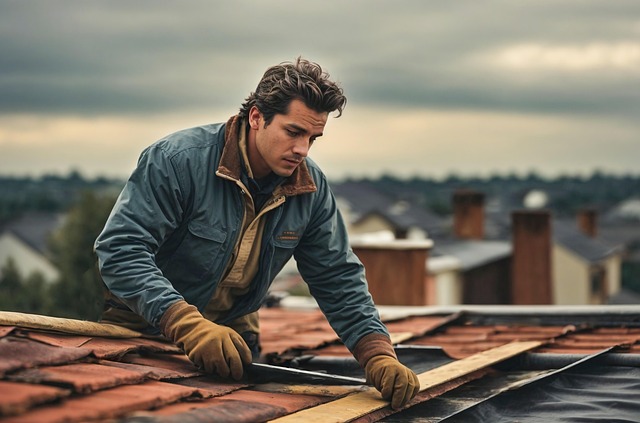Eco-friendly prefab roofs are revolutionizing construction with their sustainable approach, offering multiple advantages for energy-efficient buildings. Constructed off-site, these roofs minimize waste and installation time while providing superior insulation using recycled or renewable materials. They significantly reduce heating and cooling costs, regulate indoor temperatures, and lower energy consumption, making them ideal for extreme climates. The growing adoption in various regions, supported by successful case studies, highlights their versatility and benefits in both commercial and residential applications. Insulated prefab roofs, with advanced insulation materials, contribute to improved indoor air quality and a quieter environment while promoting sustainability and cost savings.
Discover the transformative power of eco-friendly prefab roofs in revolutionizing energy efficiency. This article explores the multifaceted benefits of insulated prefab roofing, from its significant role in sustainable construction to its remarkable energy conservation abilities. We delve into how these innovative solutions are reshaping the building industry, backed by compelling case studies and future trends that promise an even greener horizon. Uncover why eco-friendly prefab roofs are a smart choice for both builders and the environment.
Understanding Eco-Friendly Prefab Roofs: A Sustainable Alternative
Eco-friendly prefab roofs are gaining popularity as a sustainable alternative for energy-efficient buildings. These innovative roofing solutions are designed with environmental consciousness in mind, offering a range of benefits that contribute to a reduced carbon footprint. Prefab roofs are constructed off-site in controlled conditions, minimizing waste and maximizing precision. This method not only speeds up installation but also ensures superior insulation properties.
Compared to traditional roofing materials, eco-friendly prefab roofs are made from recycled or renewable resources, further promoting sustainability. They provide excellent thermal resistance, helping regulate indoor temperatures and reducing the need for excessive heating or cooling. By adopting these green roofing options, builders and homeowners can significantly lower energy costs while contributing to a healthier planet.
The Energy Efficiency Benefits of Insulated Prefab Roofing
Insulated prefab roofing offers significant energy efficiency benefits, making it a smart choice for environmentally conscious homeowners and builders alike. The integration of advanced insulation materials within these roof systems creates an effective barrier against temperature fluctuations, leading to reduced heating and cooling costs throughout the year. By minimizing heat transfer, these eco-friendly prefab roofs help maintain comfortable indoor temperatures, reducing the strain on HVAC systems.
This innovative design isn’t just about cost savings; it also contributes to a smaller carbon footprint. The energy efficiency of insulated prefab roofing is particularly notable in regions with extreme climates, where traditional roofing may struggle to keep up. By providing consistent insulation, these roofs help lower overall energy consumption, promoting sustainability and aligning with the growing demand for green building practices.
How Insulation Plays a Key Role in Energy Conservation
Insulation is a critical component in achieving energy efficiency, especially with insulated prefab roofing. By creating a barrier between the indoor environment and the exterior climate, insulation significantly reduces heat transfer, keeping buildings warmer during winter and cooler in summer. This results in lower heating and cooling costs, making eco-friendly prefab roofs an attractive option for homeowners and businesses looking to save energy and reduce their carbon footprint.
The role of insulation goes beyond temperature regulation. It also helps maintain indoor air quality by preventing moisture buildup and reducing noise pollution from external sources. With proper insulation, buildings can achieve better overall performance, contributing to a more sustainable future. This is particularly important in today’s world where energy conservation and the adoption of green building practices are gaining prominence.
Case Studies: Success Stories of Prefab Roofs in Real-World Applications
The success of insulated prefab roofing in real-world applications is a testament to its growing importance in the pursuit of energy efficiency and sustainability. Case studies across various regions highlight the significant impact of eco-friendly prefab roofs. For instance, schools and public buildings have embraced these innovative solutions, leading to notable reductions in heating and cooling costs. These projects demonstrate that insulated prefab roofing not only enhances energy efficiency but also provides a cost-effective and long-lasting alternative to traditional roofing materials.
In residential settings, homeowners have also reaped the benefits of prefab roofs. Many have reported substantial savings on their utility bills after installing these modern systems. Moreover, the ease of installation and minimal disruption during construction make eco-friendly prefab roofs an attractive option for those seeking a quick and efficient renovation. These success stories underscore the versatility and advantages of insulated prefab roofing, further encouraging its adoption in both commercial and residential sectors.
The Future of Green Building: Trends and Innovations in Prefab Roofs
The future of green building is here, and it’s being shaped by innovative technologies like eco-friendly prefab roofs. As the world shifts towards more sustainable practices, the construction industry is responding with advanced solutions that promise both aesthetic appeal and energy efficiency. Prefab roofing systems are at the forefront of this revolution, offering a faster, more cost-effective alternative to traditional methods while significantly reducing environmental impact.
Trends in eco-friendly prefab roofs showcase a blend of aesthetics and functionality. Insulated panels, for instance, not only enhance energy efficiency but also contribute to quieter indoor spaces due to their sound-absorbing properties. Additionally, these roofs are designed with recyclability in mind, integrating materials that can be reused or repurposed at the end of their life cycle. This circular approach aligns perfectly with the growing demand for sustainable construction practices, ensuring a greener future for both buildings and the planet.
Eco-friendly prefab roofs are not just a sustainable alternative but also a powerful tool for energy efficiency. By understanding their benefits, from insulation’s key role in energy conservation to real-world success stories, we can embrace the future of green building. As innovations in prefab roofs continue to evolve, these structures will play an increasingly vital role in reducing energy consumption and promoting a greener planet.
